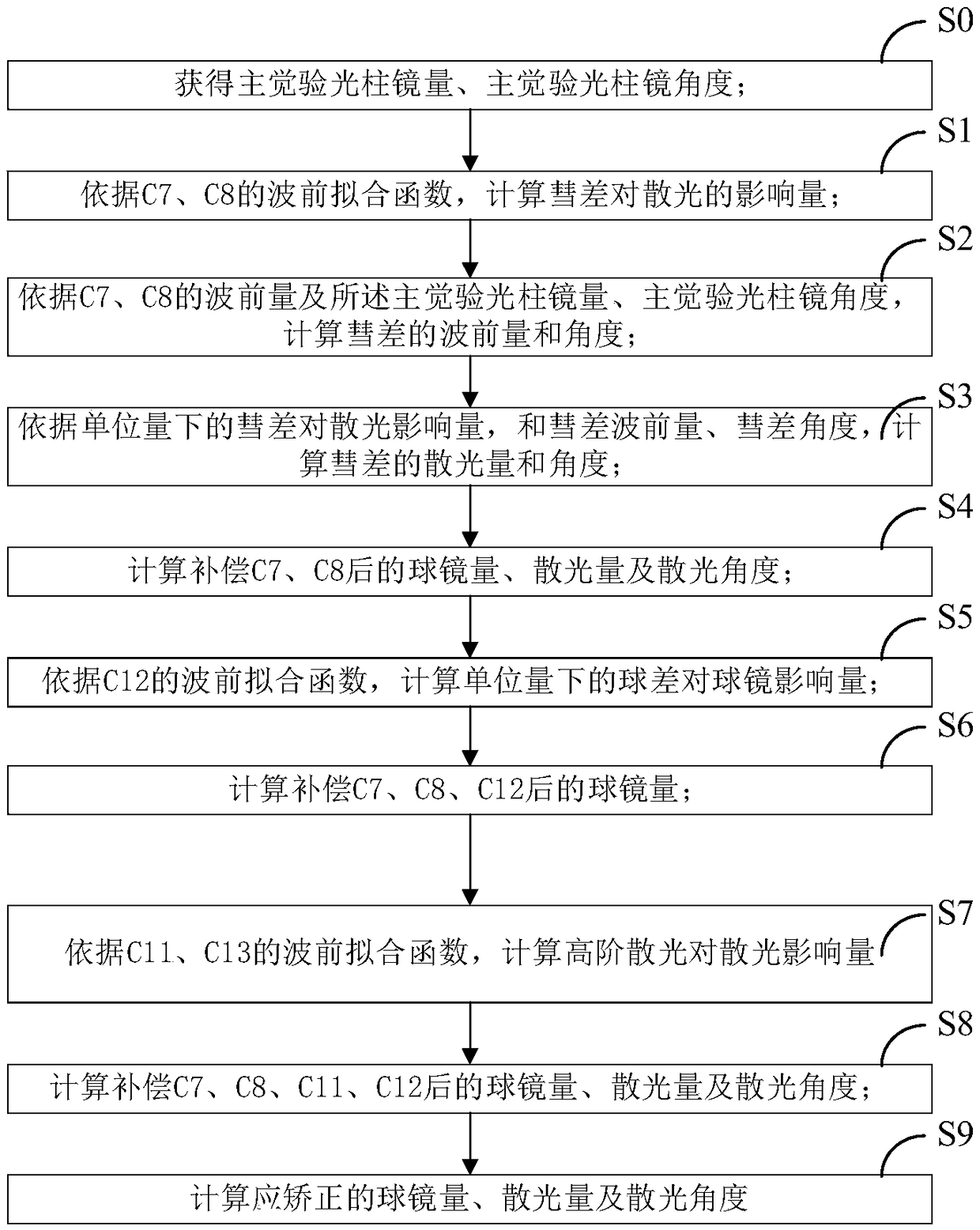High-order aberration compensation method for corneal refractive correction
A technology of high-order aberration and compensation method, which is applied in the field of high-order aberration compensation of corneal refractive correction, to achieve the effects of improving compensation accuracy, good visual quality and good compensation
- Summary
- Abstract
- Description
- Claims
- Application Information
AI Technical Summary
Problems solved by technology
Method used
Image
Examples
Embodiment
[0080] The embodiment of the present invention aims at compensating the high-order aberration in corneal refractive correction in the current technology, and proposes a high-order aberration compensation method based on ZZ Vector-Compensation FORMULA. High-order aberrations are often described by Zernike polynomials. The Zernike polynomial is a sequence function orthogonal to the unit circle, which can decompose the aberration into multiple order aberrations, so as to observe the magnitude of each order aberration. The Zernike polynomial consists of three parts: standardized coefficients, radius-dependent components (n), and azimuth-dependent components (m). In corneal refractive correction, the Zernike polynomial commonly used to calculate high-order aberrations is 6th-order 27 terms, and aberrations above the second order are high-order aberrations. figure 1 Shown is a 3D schematic of a Zernike polynomial of order 6 and 27 terms. Such as figure 1 As shown, in the Zernike ...
PUM
 Login to View More
Login to View More Abstract
Description
Claims
Application Information
 Login to View More
Login to View More - R&D
- Intellectual Property
- Life Sciences
- Materials
- Tech Scout
- Unparalleled Data Quality
- Higher Quality Content
- 60% Fewer Hallucinations
Browse by: Latest US Patents, China's latest patents, Technical Efficacy Thesaurus, Application Domain, Technology Topic, Popular Technical Reports.
© 2025 PatSnap. All rights reserved.Legal|Privacy policy|Modern Slavery Act Transparency Statement|Sitemap|About US| Contact US: help@patsnap.com



